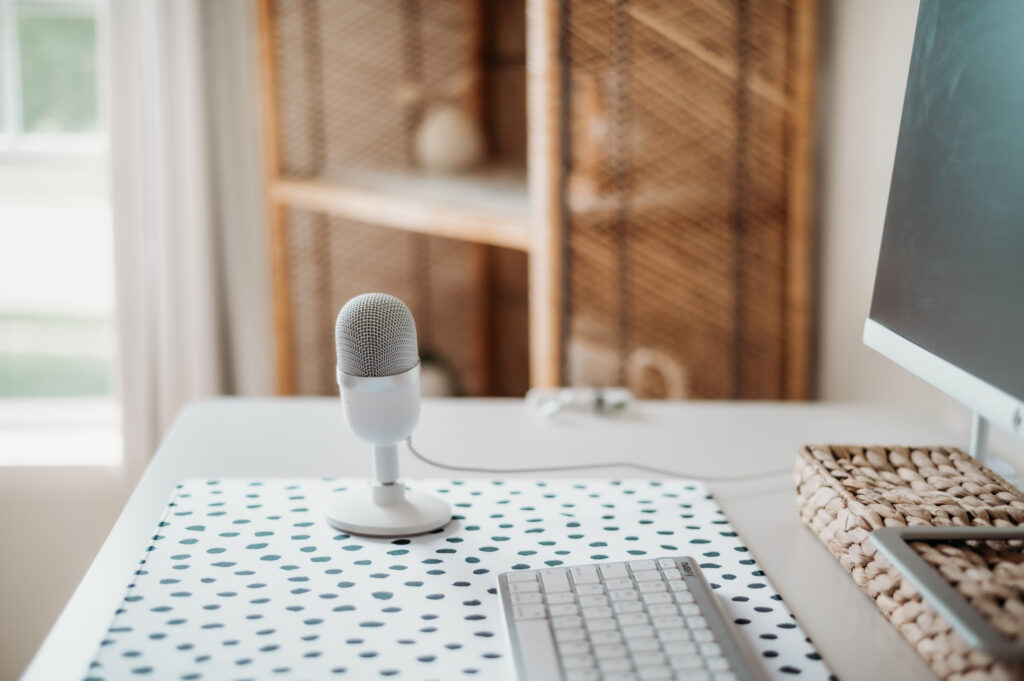Are you wondering if the anxiety you are feeling could be something more? As a licensed professional counselor with over 15 years of experience working with people who have OCD and anxiety (and also as someone who has lived with OCD myself), I know firsthand just how tricky comparing these conditions can be. In this blog post, I’m breaking down the key characteristics of OCD (Obsessive-Compulsive Disorder) and GAD (Generalized Anxiety Disorder) so that you can understand the difference (and hopefully get a better idea of OCD vs. GAD in general).
First, why does this matter?
I believe in empowering people to be their own therapists and take control of their own mental health, which is why I create regular content here on the blog and drop weekly episodes on my podcast: All the Hard Things. At the end of the day, I love to help people with both OCD and Anxiety inside my OCD and Anxiety Recovery Blueprint. I believe that it can help you regardless of your individual condition (when looking at OCD vs. GAD), so if that feels like the right next step for you, I’d love for you to join me inside here.

What is OCD?
At the most basic level, Obsessive-Compulsive Disorder (OCD) is a mental health condition that involves persistent, unwanted thoughts (obsessions) and repetitive behaviors or mental acts (compulsions) performed to ease the distress these thoughts cause. This differs from Generalized Anxiety Disorder (GAD), which involves experiencing a more generalized and pervasive sense of anxiety.
Key Characteristics of OCD
When it comes to OCD, we always look at obsessions and compulsions.
Obsessions: These are intrusive, distressing thoughts, images, or urges that keep popping up in your mind. They’re often irrational and cause a lot of anxiety or discomfort. Common obsessions include fears of contamination, fears of harming yourself or others, and intrusive thoughts about taboo topics like sex or violence.
Compulsions: These are repetitive behaviors or mental acts you do in response to obsessions to try to reduce distress or prevent a feared event from happening. They’re often over the top and not really connected to the problem they’re supposed to fix. Common compulsions include excessive hand washing, checking, counting, arranging, and seeking reassurance.
While OCD mainly shows up as mental symptoms, it can also have physical effects. The stress and anxiety from obsessions and compulsions can lead to fatigue, muscle tension, and trouble sleeping. Additionally, the physical strain of performing compulsions can cause issues (like skin irritation from too much washing or repetitive strain injuries from doing the same actions over and over).
On top of that, people with OCD often deal with a lot of cognitive and emotional distress. They might feel constantly uneasy or scared, feel like they can’t control their thoughts, and struggle with intense feelings of guilt or shame related to their obsessions. Compulsive behaviors, although intended to reduce anxiety, often cause more emotional distress and trap people in a cycle of obsessions and compulsions.
If that’s you right now, I just want to reassure you that you are NOT alone. I’ve been there, and at this point in my career I’ve worked with hundreds if not thousands of people who are struggling with the same things as you are.
What is Generalized Anxiety Disorder (GAD)?
Next, let’s move on to Generalized Anxiety Disorder. Generalized Anxiety Disorder (GAD) is a mental health condition characterized by chronic, excessive worry about various aspects of life. Unlike OCD, which involves specific obsessions and compulsions, GAD is more generalized. You will typically not have obsessive or compulsive behaviors as a way to combat your anxiety.
Key Characteristics of GAD
Here are the 3 characteristics of Generalized Anxiety Disorder.
Excessive Worry: GAD involves persistent worry that’s tough to control and happens more often than not for at least six months. Common worries include concerns about health, finances, work, and personal relationships.
Physical Symptoms: Like OCD, not all of the symptoms are mental. GAD can show up physically, with symptoms like restlessness, fatigue, trouble concentrating, irritability, muscle tension, and sleep problems.
Cognitive and Emotional Symptoms: People with GAD often feel like something bad is always about to happen, have trouble relaxing, and find it hard to deal with uncertainty, leading to significant emotional distress.
OCD vs. GAD: Both Impact Daily Life
When it comes to OCD vs. GAD, both can have a negative effect on your daily life. With OCD, for example, obsessions and compulsions can take up a lot of time, messing with daily activities and responsibilities. This might mean avoiding certain places or situations, spending way too much time on rituals, and struggling with relationships and job performance. For example, someone with contamination OCD might skip social gatherings to avoid germs, while someone with checking OCD might spend hours making sure all appliances are off, making it hard to leave the house on time.
Let me give you another example with GAD. In some cases, people might have trouble focusing at work, constantly seek reassurance from others, or avoid situations that trigger their anxiety. This ongoing anxiety can cause significant distress and make it hard to fully engage in (and enjoy!) your personal and professional life.
Diagnosing OCD vs. GAD
Diagnosing OCD and GAD can be tricky because of common misconceptions and the wide range of symptoms they come with. People often think OCD is just about being super clean or organized, but this does a huge disservice to other forms like harm OCD or pure obsessional OCD. This can lead to people being misdiagnosed or not getting diagnosed at all, which means they don’t get the right treatment.
On the flip side, GAD is often brushed off as a “normal” worry, but it’s much more than that. As I mentioned above, GAD involves constant, excessive anxiety that really messes with your daily life. This misunderstanding can make people think it’s not a big deal, stopping them from getting the help they need or being taken seriously. It’s important to recognize that GAD is way more than just typical worry for proper diagnosis and treatment, just like it’s crucial to understand the various forms of OCD to correctly identify and manage it.
Treating OCD vs. GAD
Ready for the good news? Despite the differences in symptoms, treatment for OCD and GAD often involves similar cognitive-behavioral approaches. I believe the goal should always be to tackle the root of the anxiety, regardless of its focus. If you’re ready to take control of your life, I go into detail about this (and ways to empower yourself to tackle your anxiety!) inside the OCD and Anxiety Recovery Blueprint.
While there is a lot of bad advice out there when it comes to treating OCD vs. GAD, there are two methods that I’ve used that are data-driven to help people who are struggling with OCD or anxiety.
Exposure and Response Prevention (ERP): ERP is a key treatment for OCD, focusing on gradually exposing you to feared thoughts and situations while stopping compulsive responses. This helps reduce the power of obsessions and teaches healthier ways to cope. For example, someone with contamination OCD might practice touching a doorknob without washing their hands afterward, slowly decreasing their anxiety over time.
Acceptance and Commitment Therapy (ACT): ACT helps you accept your thoughts and feelings without trying to change them and commit to actions that match your values. This approach promotes psychological flexibility and can be effective for both OCD and GAD. Some ACT techniques include mindfulness exercises (this doesn’t have to mean sitting in a room with zen music!) and value-based goal setting.
While medication can be used to treat both OCD and GAD, I recommend talking to a psychiatrist to discuss your options if that’s something you’re interested in pursuing.

Comparing OCD vs. GAD
At the end of the day, I hope this breakdown has clarified the differences between OCD and GAD and given you some insight into which one feels more like what you are currently experiencing (if either of them does). Remember, you are not alone, and help is available. If you’re ready to take the next step in your recovery journey, I would love to support you inside my OCD and Anxiety Recovery Blueprint, where we dive deeper into evidence-based strategies to manage and overcome these challenges. I’d love to help you empower yourself to take control of your mental health and live a joy-filled badass life!
most popular episodes
Love my podcast?
Episode 112: Postpartum OCD and False Memory OCD
Imagine how in depth I can go in an online course. Instantly downloadable and game-changing. Take the next step towards an amazing life.